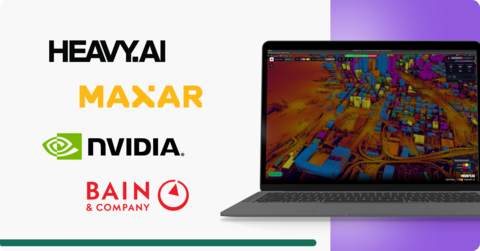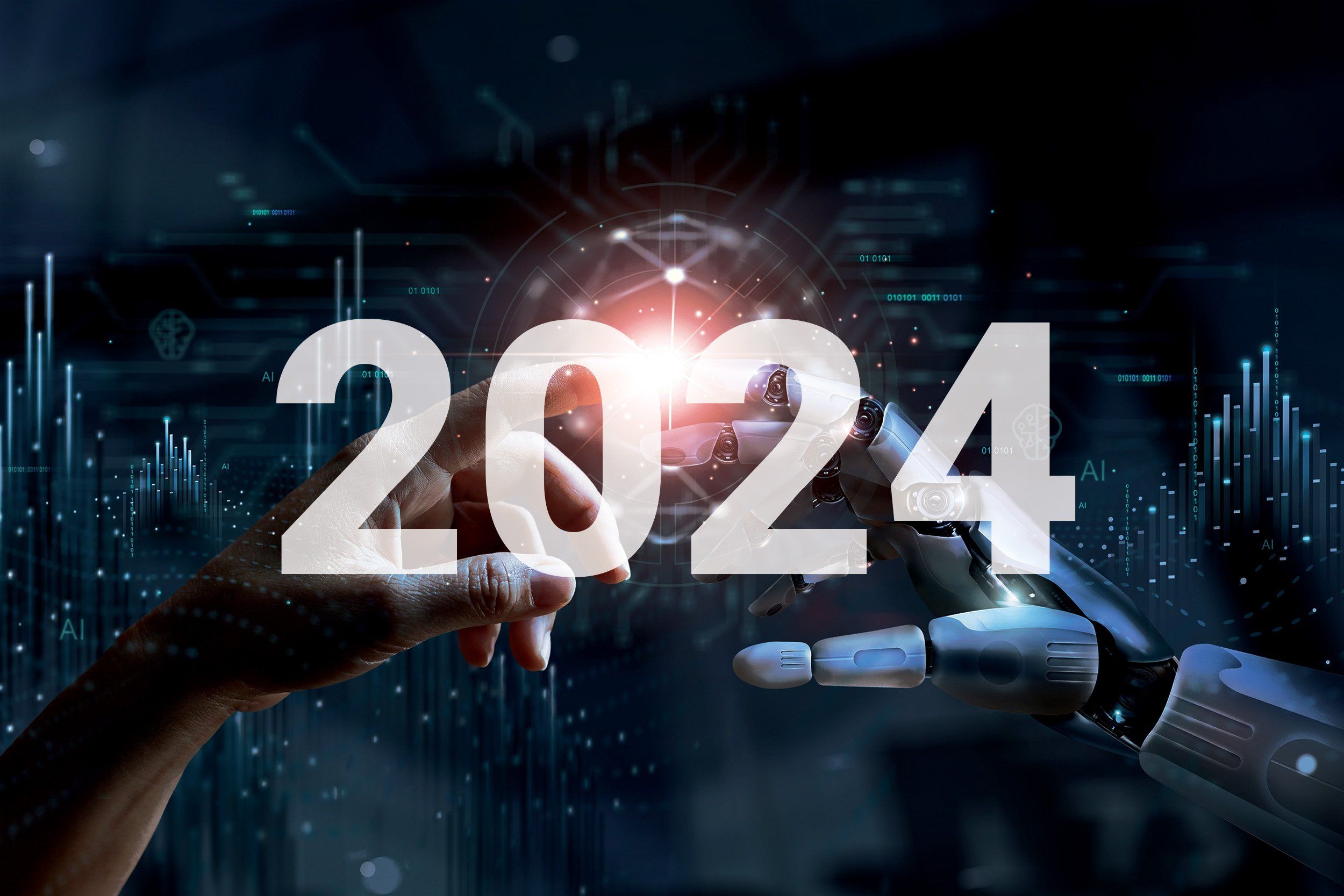Together, the companies provide communication service providers and telco planners with a new, cutting-edge network digital twin to access accurate and detailed information on a global scale
HEAVY.AI , an innovator in advanced analytics, today announced it is expanding its collaboration with NVIDIA to include global management consulting firm Bain & Company and Maxar , a provider of comprehensive space solutions and secure, precise, geospatial intelligence. This collaboration will provide communication service providers (CSPs) with faster and more accurate tools for determining antenna placements, assuring optimal signal coverage and enabling greater efficiencies in network deployments.
This press release features multimedia. View the full release here: https://www.businesswire.com/news/home/20230216005149/en/

HEAVY.AI teams with Bain, Maxar, and NVIDIA to provide communication service providers and telco planners with a new, cutting-edge network digital twin to access accurate and detailed information on a global scale. (Graphic: Business Wire)
This expands on HEAVY.AI's existing endeavor with NVIDIA, which includes HEAVY.AI's HeavyRF solution built on the NVIDIA Omniverse platform announced last fall. The addition of Bain and Maxar will further streamline telco deployments by creating more accurate and detailed digital twins faster.
"By connecting the diverse data streams from Maxar, Bain's integrated expertise and coupling them with the compute power from HEAVY.AI and NVIDIA, this collaboration enables telcos to make nationwide business decisions through a single screen with up-to-the-minute insights," said Jon Kondo, CEO of HEAVY.AI. "This ensures telcos are making the best business decisions that serve not only their regional needs but national strategy as well."
Leveraging Maxar's high-resolution Precision3D geodata built from its industry-leading satellite imagery, NVIDIA Omniverse and Bain's extensive domain knowledge and data-driven insights, CSP planners now have access to network digital twins that provide next-level insights to drive business decisions. HeavyRF enables customers to model signal propagation on top of Maxar's high-resolution 50 centimeter clutter height data interactively at a regional, national or global scale, delivering unprecedented possibilities for telecommunications planning across the globe. This means planners can simulate future cell sites, enabling them to choose the best location based on coverage achieved. Digital twin simulations help telcos save time and money by optimizing the planning process and improving the quality of decision-making, ultimately maximizing their return on invested capital.
By improving the resolution, accuracy and speed of the data collection and analysis process, HeavyRF revolutionizes telcos' access to reliable historic and real-time network performance data and insights. When Maxar's Precision3D geodata is combined with Bain's demographic and behavioral data expertise, and supercharged by HEAVY.AI and NVIDIA's compute power, telcos can improve and accelerate business decision-making without delays resulting from batch data deliveries and increased compute requirements for these simulation applications.
"Communication service provider planners have previously been challenged by a lack of easily accessible data that conveys the nuances of the built and natural environments on Earth. Maxar's Precision3D geodata serves as a high-resolution digital twin of Earth, enabling signal propagation and cell site placement to be accurately simulated," said Dan Nord, Maxar's SVP and GM of Enterprise Earth Intelligence. "Other RF software programs can't handle the weight of our 3D geodata at this resolution, resulting in an extremely lengthy processing time. The collaboration between Maxar, Bain, NVIDIA and HEAVY.AI solves this challenge for telcos. HeavyRF, built on the NVIDIA Omniverse platform, allows us to continue unlocking the promise of space to help solve problems on Earth."
Without reliable data during the planning phase, it can be difficult for telcos to guarantee network investments will deliver at scale throughout their lifetime. Having access to network digital twins provides accurate sources of data during this critical phase, ensures that consumers have stable service for years to come, and mitigates additional costly capital expenditure reinvestments in that area.
"Telcos need a new, more accurate way to tackle their tower and microcell planning needs," said Chris Penrose, global head of business development for telco at NVIDIA. "Our groundbreaking collaboration with HEAVY.AI, Bain and Maxar will enable planners to tackle challenging settings, like multi-tiered urban structures and heavily vegetated locations, as well as use information from other datasets to create the best possible network design."
"We are privileged to collaborate with these fellow industry leaders and shape the future of telco planning," said Darryn Lowe at Bain. "With these advanced analytics combined with our data-driven insights, telcos can discover new market growth opportunities, as well as avoid potentially expensive errors in business decisions."
"Telcos have the monumental challenge of swiftly analyzing voluminous information to make superior business decisions. They now have access to instantaneous and precise data that guarantees exceptional coverage – leading to highly satisfied customers and increased profitability," said Kondo.
See the solution in action at Maxar's booth at Mobile World Congress Barcelona 2023 (Hall 4 Stand 4B16) by signing up for a demo .
For more information on HEAVY.AI's advanced analytics capabilities, visit heavy.ai .
For more information on Maxar's Precision3D geodata, visit their webpage .
About HEAVY.AI
HEAVY.AI provides advanced analytics that empower businesses and the government to visualize high-value opportunities and risks hidden in their big location and time data. HEAVY.AI supports high-impact decisions in previously unimaginable timelines by harnessing the massive parallelism of modern GPU and CPU hardware. The analytics technology unifies today's exploding data volumes from multiple sources for a better immersive, real-time, interactive visual experience. It is available in the cloud and on premises. HEAVY.AI originated from research at Harvard and MIT Computer Science and Artificial Intelligence Laboratory (CSAIL) and is funded by GV, In-Q-Tel, New Enterprise Associates (NEA), NVIDIA, Tiger Global Management, Vanedge Capital and Verizon Ventures. The company is headquartered in San Francisco. Learn more about HEAVY.AI at heavy.ai .
About Maxar
Maxar Technologies (NYSE:MAXR) (TSX:MAXR) is a provider of comprehensive space solutions and secure, precise, geospatial intelligence. We deliver disruptive value to government and commercial customers to help them monitor, understand and navigate our changing planet; deliver global broadband communications; and explore and advance the use of space. Our unique approach combines decades of deep mission understanding and a proven commercial and defense foundation to deploy solutions and deliver insights with unrivaled speed, scale and cost-effectiveness. Maxar's 4,400 team members in over 20 global locations are inspired to harness the potential of space to help our customers create a better world. Maxar trades on the New York Stock Exchange and Toronto Stock Exchange as MAXR. For more information, visit www.maxar.com .
About Bain
Bain & Company is a global consultancy that helps the world's most ambitious change makers define the future. Across 64 cities in 39 countries, we work alongside our clients as one team with a shared ambition to achieve extraordinary results, outperform the competition, and redefine industries. We complement our tailored, integrated expertise with a vibrant ecosystem of digital innovators to deliver better, faster, and more enduring outcomes. Our 10-year commitment to invest more than $1 billion in pro bono services brings our talent, expertise, and insight to organizations tackling today's urgent challenges in education, racial equity, social justice, economic development, and the environment. Since our founding in 1973, we have measured our success by the success of our clients, and we proudly maintain the highest level of client advocacy in the industry.
View source version on businesswire.com: https://www.businesswire.com/news/home/20230216005149/en/
Eriika Sparks
10Fold Communications for HEAVY.AI
heavyai@10fold.com
Kristin Carringer
Maxar Communications
Kristin.carringer@maxar.com





